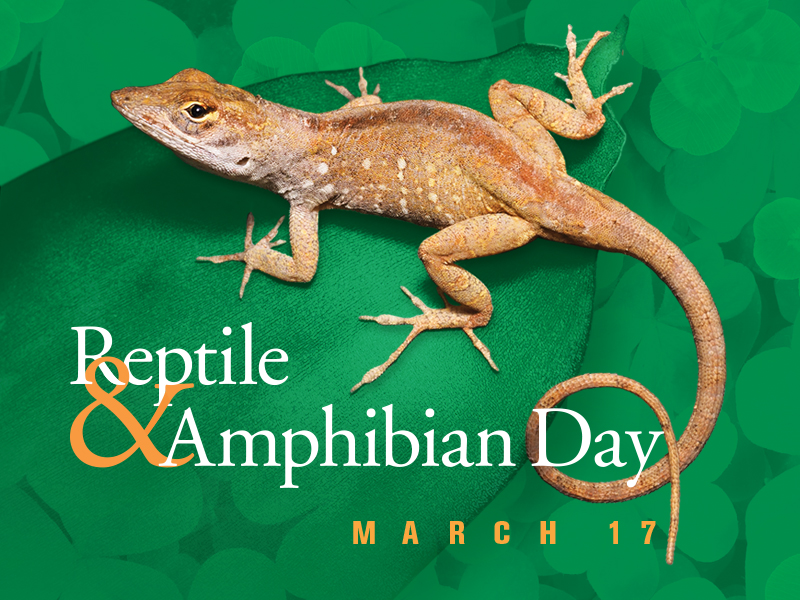Here lizard, lizard, lizard . . . Museum hosts Reptile & Amphibian Day, March 17
For immediate release ‐ March 05, 2018
Contact: Jon Pishney, 919.707.8083. Images available upon request

(RALEIGH, N.C.) — From five-lined skinks to green anoles, did you know there are 14 different species of lizard found in North Carolina? Eleven of which are native to the state, and three that are not. Find out more when the North Carolina Museum of Natural Sciences hosts its 24th annual Reptile & Amphibian Day, Saturday, March 17, 9 a.m. – 5 p.m. This free event is the largest of its kind in the country and offers a rare opportunity for visitors to come face-to-face with reptiles and amphibians from North Carolina and around the world!
Visitors can enjoy presentations in the Daily Planet Theater including “Lizards of the World” from Museum herpetologist Bryan Stuart, “Lizards of North Carolina” from Museum collections manager Jeff Beane, and “Green Iguanas” from iguana rescuer Reagan Morris. Take a safe peek at the world’s two species of venomous lizards — the Mexican beaded lizard and the Gila monster (whose venom is about as toxic as that of a western diamondback rattlesnake) — and learn how Gila monster venom is being used in experimental drugs for treating people with diabetes. Or meet some giant (live) snakes and see how they compare to “Titanoboa” — the largest snake that ever lived.
Want to see how snakes, salamanders, frogs and the venomous Gila monster eat? Live feeding demonstrations happen throughout the day. Explore real “dragons” found in nature and discover the similarities they share with the mythological creatures. You can also overcome your fears by touching your first snake with the guidance of experienced keepers. Or learn how to safely identify the different species of snake in North Carolina, and even how to attract them to your back yard.
All floors of the Museum will offer dozens of guest exhibitors and herpetology experts, live reptiles and amphibians (including lizards, crocodilians, frogs and toads, snakes and salamanders, turtles and tortoises), and information on topics ranging from conservation efforts to veterinary care. Kids can enjoy making take-home crafts, perusing the Pollywog Playspace (with activities “perfect for young tadpoles”), and much more.
The North Carolina Museum of Natural Sciences in downtown Raleigh (11 and 121 W. Jones St.) is an active research institution that engages visitors of every age and stage of learning in the wonders of science and the natural world. Hours: Monday–Saturday, 9 a.m.–5 p.m., and Sunday, noon–5 p.m. General admission is free. Emlyn Koster, PhD, Director. For more information, visit naturalsciences.org.

